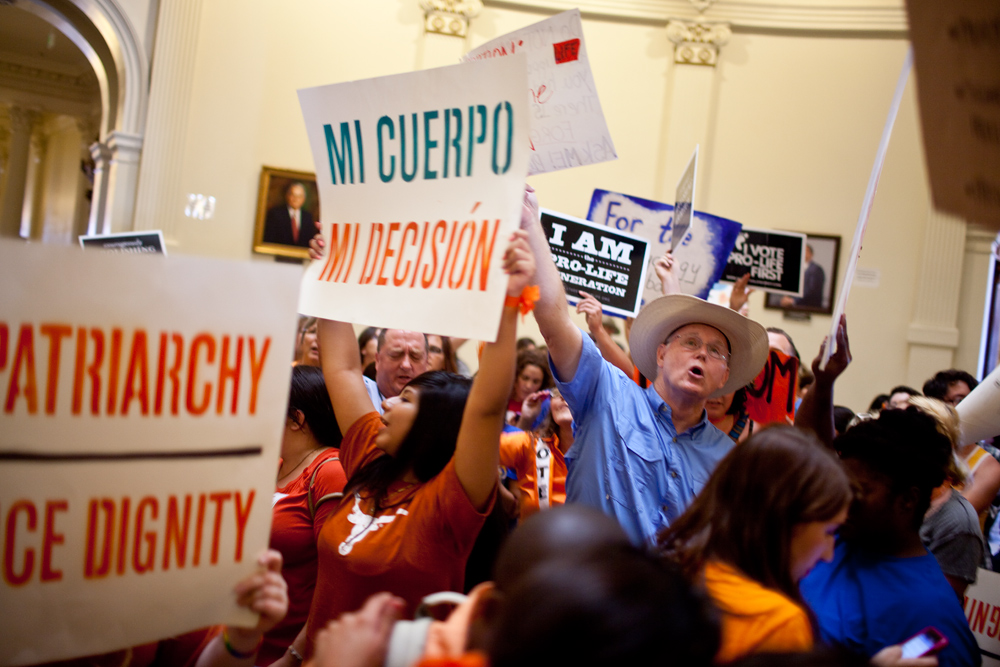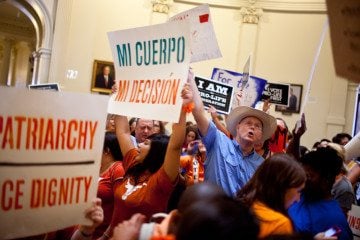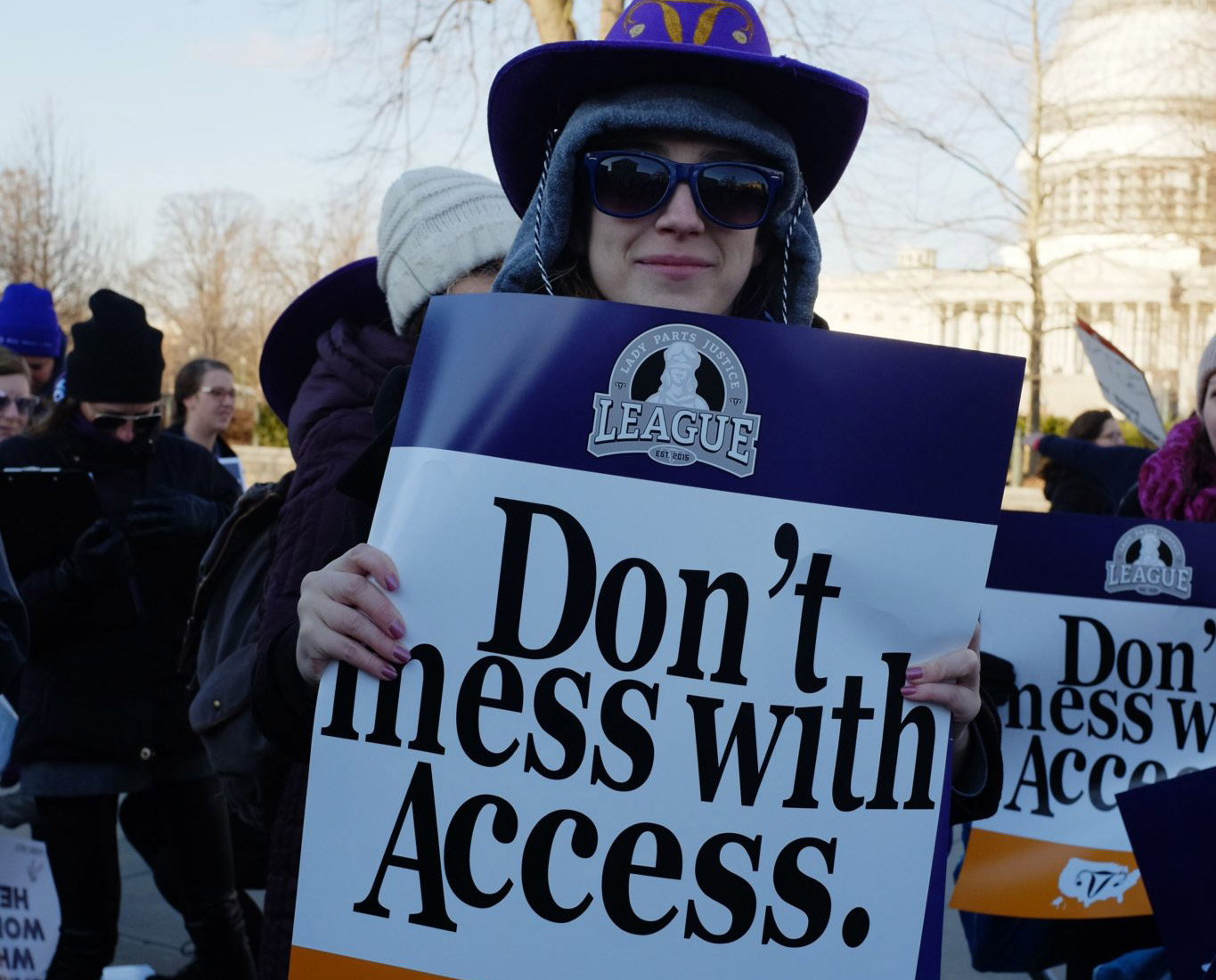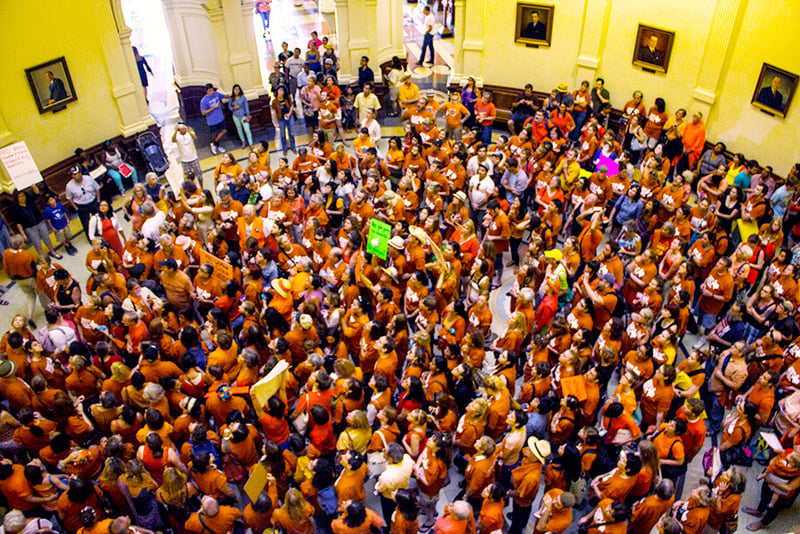
Days After Supreme Court Ruling, State Data Shows Dramatic Drop in Abortions
Texas Latinas were disproportionately affected by restrictions in the state's anti-abortion law.


The Texas Department of State Health Services has released the state’s 2014 abortion data after weeks of allegations that the agency had been intentionally withholding the numbers.
The 2014 data is significant because it is the first year to reflect the impact of Texas’ anti-abortion law, House Bill 2, on abortion providers and patients across the state.
The U.S. Supreme Court struck down parts of HB 2 as unconstitutional this week, in part because the court could not find evidence for Texas’ justification for the law — that mandatory hospital admitting privileges for abortion providers and hospital-like renovations for abortion clinics would increase patient safety. In their challenge to the law, Texas abortion providers argued that HB 2 would instead reduce access to abortion and would have a disproportionately negative impact on Texas Latinas.
According to the newly released numbers, the providers were right.
One of the most striking revelations is the change in number of medical abortions — a two-pill regimen that, under HB 2, was heavily restricted and required many more clinical visits than a surgical abortion procedure. In 2013, 16,189 Texans got medical abortions; in 2014, that number dropped to almost 5,000. (Medication abortions became easier to access earlier this year, when an FDA label change enabled more providers to issue the drugs under the law.)
The 2014 DSHS data also suggest the law had a disproportionate impact on Texans of color. In 2013, over 24,000 of Texans who got abortions were Hispanic; in 2014, that number decreased by 18 percent to under 20,000. The numbers also show a 7.7 percent decrease among black Texans who got abortions.
Overall, the number of abortions in Texas decreased by 14 percent from almost 64,000 in 2013 to almost 55,000 in 2014. The data also show that the number of abortions performed in clinics dropped by 21 percent from 2013, and the number performed at ambulatory surgical centers increased by 12 percent, reflecting the closure of half the state’s non-surgical center clinics after parts of HB 2 took effect in 2013.
The new numbers also don’t show abortion was any safer post-HB 2. For both 2014 and 2013, complication rates were negligible; the complication rates were 0.04 percent and 0.05 percent, respectively.
Major medical groups opposed HB 2’s restrictions, with representatives testifying to the safety of legal abortion at legislative hearings and later in federal court briefs. According to researchers at the University of California San Francisco, abortion is about as safe as colonoscopy, and according to a 2012 study published in Obstetrics and Gynecology, women are 14 times more likely to die in childbirth than from a legal abortion.
Anti-abortion lawmakers and state leaders maintained that HB 2 was necessary to protect patient health, but the state was unable to provide the Supreme Court an example of the law’s positive impact on patient outcomes, which Justice Stephen Breyer noted in the court’s 5-3 majority opinion.
“When directly asked at oral argument whether Texas knew of a single instance in which the new requirement would have helped even one woman obtain better treatment, Texas admitted that there was no evidence in the record of such a case,” Breyer wrote.
The political director of the anti-abortion group Texas Right to Life, John Seago, told the Observer that the state’s data isn’t entirely “reliable,” but that he sees the decrease in abortions as a win.
“The big picture of the data is something our organization and a lot of Texans are celebrating,” Seago said. “The major decrease of elective abortions is a victory … we believe that elective abortion is a gross injustice.”
Calls and emails to Lieutenant Governor Dan Patrick, who co-sponsored HB 2 as a state senator, and Attorney General Ken Paxton, who defended the law in court, were not returned as of press time.

